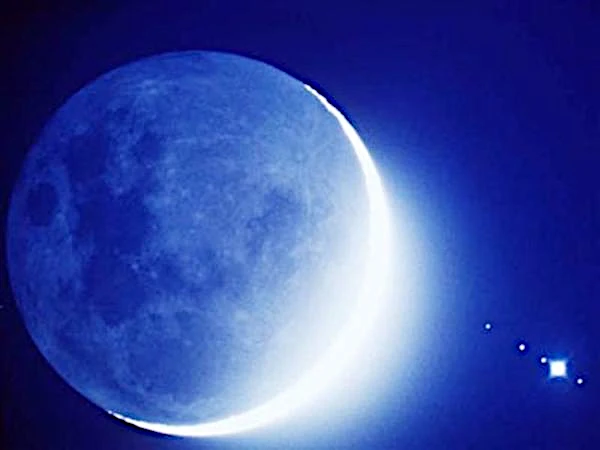
The Blue Moon is a popular term used to designate the second full moon that occurs within the same calendar month. Since the lunar cycle lasts approximately 29.5 days, it is possible for a month (especially those with 30 or 31 days) to contain two full moons. This happens roughly every 2.7 years. The term "blue" does not refer to the color of the moon but rather to its rarity.
An older definition, derived from agricultural folklore, designates the third full moon in a season that has four (instead of the usual three) as a Blue Moon.
No notable physical effect is associated with the Blue Moon: it is not brighter, closer, or energetically different from other Full Moons.
The term Ice Moon comes from Native American traditions or ancient agricultural calendars, which named the Full Moons according to the seasons or natural phenomena associated with each month.
The full moon of January is sometimes called the Wolf Moon or Ice Moon due to the harsh winters in the Northern Hemisphere. This is a phenomenological and cultural designation.
If a Blue Moon occurs in January, it could be nicknamed the Blue Ice Moon, but this is a poetic combination rather than an official astronomical term.
The light that illuminates the Moon comes almost exclusively from the Sun.
Earth does emit some thermal radiation (mainly infrared) and also scatters some light in the ultraviolet via the upper atmosphere (auroras or Rayleigh scattering), but this emission is extremely weak compared to direct sunlight.
When observing a blue moon, it is not a real color effect, except in very rare atmospheric cases. The only physical way to obtain a visually blue moon is related to abnormal light scattering in the Earth's atmosphere, for example:
These phenomena inject particles into the stratosphere that are comparable to or larger than the wavelength of visible light. These particles preferentially scatter and absorb red light, reducing its contribution to the transmitted spectrum. The Moon can then appear visually bluish, a rare effect due to particular atmospheric conditions.